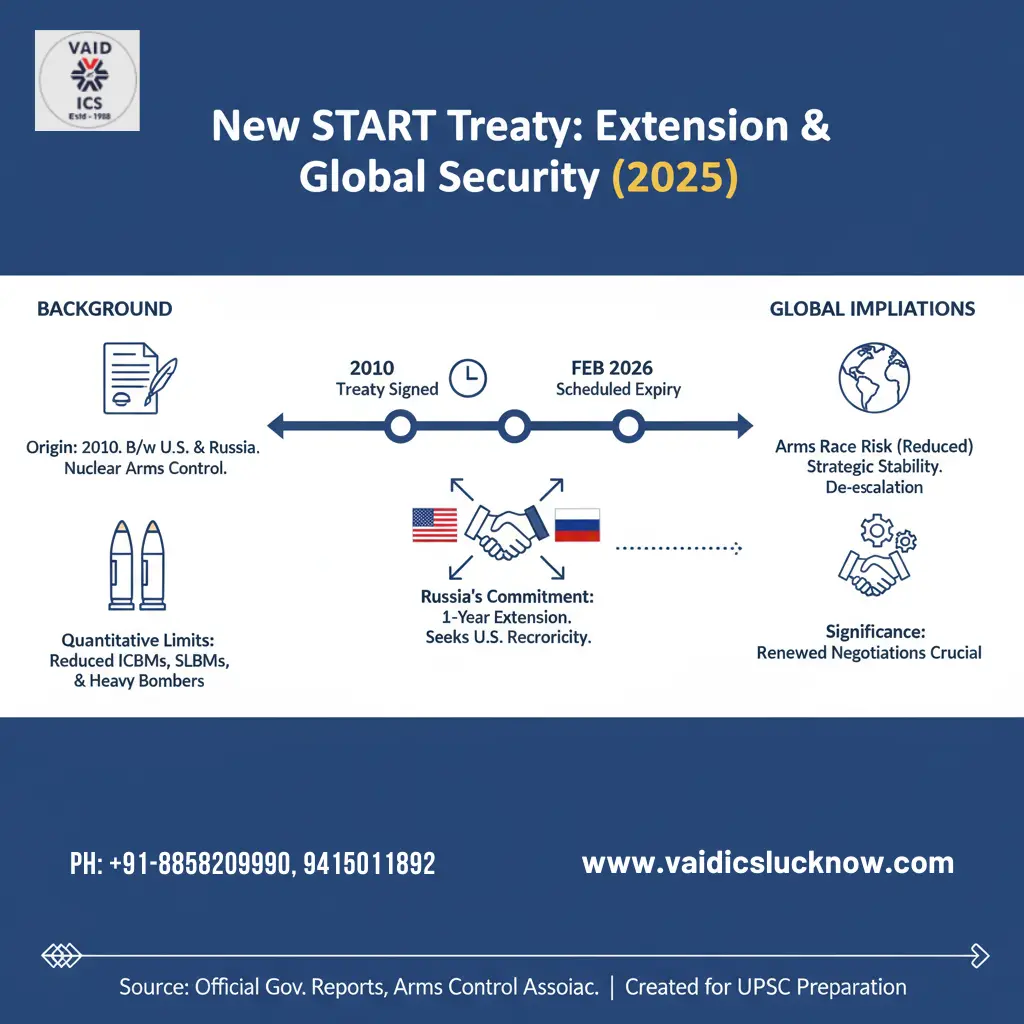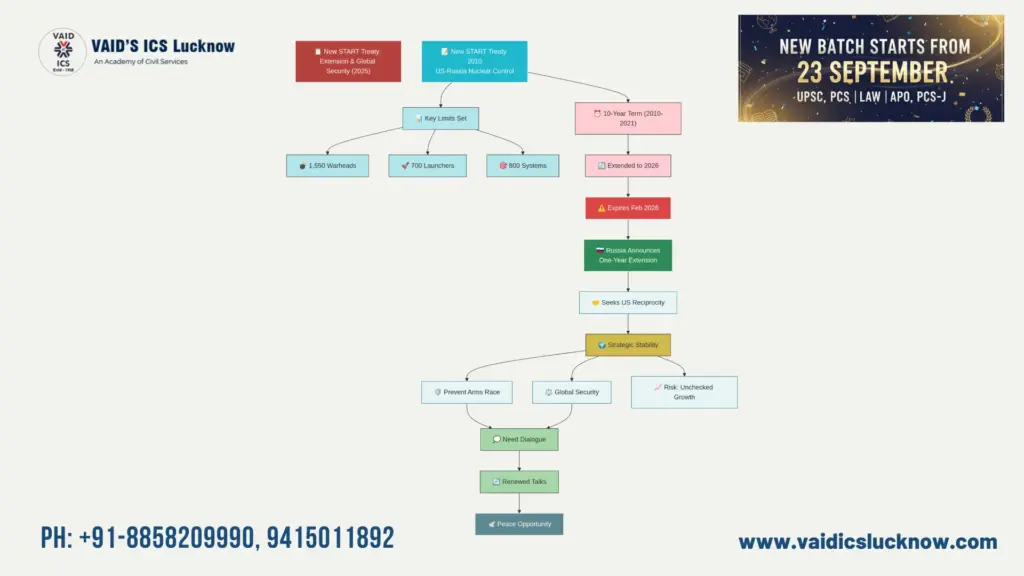September 23, 2025
START Treaty: 5 Powerful Effects of Russia’s Bold Extension
New START Treaty
Russian President Vladimir Putin announced on Monday that Moscow will continue to adhere to nuclear arms limits under the New START Treaty with the United States for one more year, despite the treaty’s scheduled expiration in February 2026. He also called on Washington to follow the same approach.
Key Points:
New START Treaty Background:
- The 2010 New START Treaty is the last remaining nuclear arms control pact between the U.S. and Russia.
- It imposes central quantitative limitations on deployed strategic nuclear warheads, bombs, and launchers for both countries.
- The treaty is set to expire on 5th February 2026, raising concerns among arms control experts.
Russia’s Position:
- President Putin warned that the termination of the treaty could destabilize global security and fuel nuclear weapons proliferation.
- He emphasized that maintaining the status quo would help prevent a new strategic arms race and ensure an acceptable level of restraint.
- Russia is prepared to adhere to the treaty’s central limitations for one year beyond its expiration date.
Global Implications:
- Arms control advocates have long expressed concern that the looming expiration of New START could trigger a renewed nuclear arms race.
- Without the treaty, both countries could expand nuclear arsenals unchecked, increasing the risk of strategic instability and potential nuclear conflict.
Significance:
- Russia’s announcement signals a commitment to stability in strategic arms control, even amid geopolitical tensions.
- The extension provides temporary reassurance to the global community, buying time for potential renewed negotiations on arms control.
- Observers note that U.S. response will be critical in determining whether a mutual extension or new agreement can be reached.
Other related Treaties:
Strategic Arms Reduction Treaty I & II (START I & II):
- START I (1991–2001): Bilateral U.S.-Soviet/Russian treaty limiting deployed strategic nuclear warheads and delivery systems.
- START II (1993–2009, never fully implemented): Aimed to reduce strategic nuclear arsenals further and banned MIRVed ICBMs (multiple independently targetable reentry vehicles).
Intermediate-Range Nuclear Forces Treaty (INF Treaty, 1987–2019):
- Bilateral treaty between the U.S. and USSR/Russia banning ground-launched ballistic and cruise missiles with ranges 500–5,500 km.
- The U.S. withdrew in 2019 citing Russian violations.
Treaty on the Non-Proliferation of Nuclear Weapons (NPT, 1968):
- Multilateral treaty with 190+ signatories.
- Objective: Prevent the spread of nuclear weapons, promote disarmament, and facilitate peaceful nuclear energy.
- Core obligations:
- Non-nuclear states: Cannot develop nuclear weapons.
- Nuclear states: Commit to disarmament efforts.
Comprehensive Nuclear-Test-Ban Treaty (CTBT, 1996):
- Bans all nuclear explosions for testing purposes globally.
- Signed by 185 states, but not yet in force because key nuclear-capable states have not ratified.
Strategic Offensive Reductions Treaty (SORT / Moscow Treaty, 2002–2011):
- Bilateral U.S.-Russia treaty to reduce deployed strategic nuclear warheads to 1,700–2,200 each.
- Superseded by New START in 2011.
Treaty on Conventional Armed Forces in Europe (CFE, 1990):
- While primarily conventional arms, it aimed to balance military forces and reduce risks of large-scale conflict in Europe.
Various Plutonium & Fissile Material Agreements:
- Plutonium Management and Disposition Agreement (PMDA, 2000): Between the U.S. and Russia to dispose of weapons-grade plutonium.
Fissile Material Cut-off Treaty (FMCT, proposed): Not yet in force; aims to ban production of fissile material for nuclear weapons.
September 23, 2025
September 22, 2025
September 17, 2025
September 16, 2025


